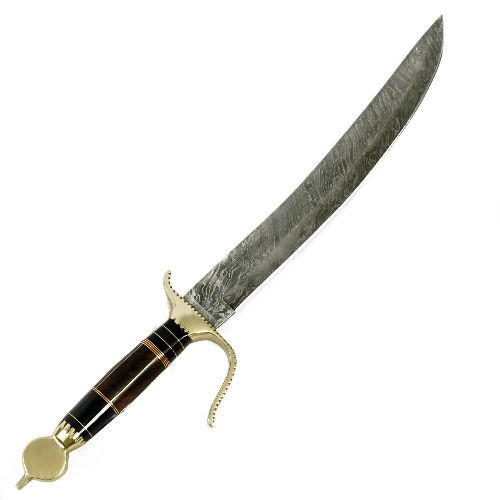Scimitar Swords: Unleashing the Legends of the Curved Blade.
- battlingblades643
- Aug 4, 2023
- 2 min read

Throughout the annals of history, certain weapons have captured the imagination and left an indelible mark on cultures and civilizations. One such weapon, revered for its distinctive curved blade and legendary prowess in battle, is the Scimitar sword. As captivating as it is lethal, the Scimitar has a rich history that spans continents and embodies the spirit of ancient warriors.
Origins and Evolution
The origins of the Scimitar can be traced back to the Middle East, where it emerged during the early centuries of human civilization. Its design was born from a fusion of various influences, including the Persian and Arabic cultures. The defining feature of the Scimitar is its curved blade, which sets it apart from straight-edged swords.
Over time, the Scimitar's design evolved, adapting to the needs and preferences of different regions. While its blade retained the iconic curve, variations in hilt styles, blade lengths, and overall weight emerged. These adaptations allowed the Scimitar to cater to the unique combat techniques and conditions of the diverse landscapes it encountered.
The Scimitar in Battle

The Scimitar earned its reputation as a formidable weapon on the battlefield. Its curved blade offered several advantages in combat. The slashing motion of the Scimitar allowed warriors to deliver powerful strikes, inflicting devastating wounds on opponents. The design also made it well-suited for mounted warfare, where the swift and precise strikes proved decisive in mounted cavalry charges.
Throughout history, the Scimitar became synonymous with the skilled warriors who wielded it. From the fearsome Saracen warriors in the Middle East to the Ottoman Janissaries, the Scimitar became an emblem of martial prowess and chivalry.
Symbolism and Cultural Significance
Beyond its practical applications in warfare, the Scimitar also held profound cultural and symbolic significance. In many societies, it became a symbol of honor, courage, and nobility. The Scimitar often appeared in myths, folklore, and artwork, solidifying its place as a legendary weapon associated with heroic deeds and valorous acts.
In addition to its military role, the Scimitar played a ceremonial role in various cultures. Ornately decorated Scimitars were presented as gifts to dignitaries and esteemed figures, signifying respect and friendship.
Scimitars Today
While the era of traditional warfare has waned, the allure of the Scimitar endures in the modern world. Today, Scimitar and Bastard swords continue to captivate enthusiasts and collectors worldwide. As artifacts of history, they represent an era of chivalry, honor, and the ancient art of swordsmanship.
For modern practitioners of historical martial arts and swordsmanship, the Scimitar presents a unique challenge and an opportunity to reconnect with the techniques and traditions of the past. As decorative pieces, Scimitars adorn walls and display cases, adding an air of exotic mystique to any collection.
Conclusion
The Scimitar sword, with its mesmerizing curve and storied past, remains an enduring symbol of the art of war and the cultures that crafted it. Whether admired for its graceful beauty, cherished for its historical significance, or studied for its martial prowess, the Scimitar continues to wield its enchanting allure across the ages. As long as the echoes of ancient battles linger in the annals of time, the Scimitar sword shall remain an everlasting tribute to the valor of warriors long past. Embrace the allure of these legendary blades and explore an exquisite collection at BattlingBlades.com. Unleash your inner warrior and uncover the captivating heritage of the Scimitar!





Comments